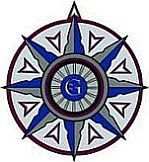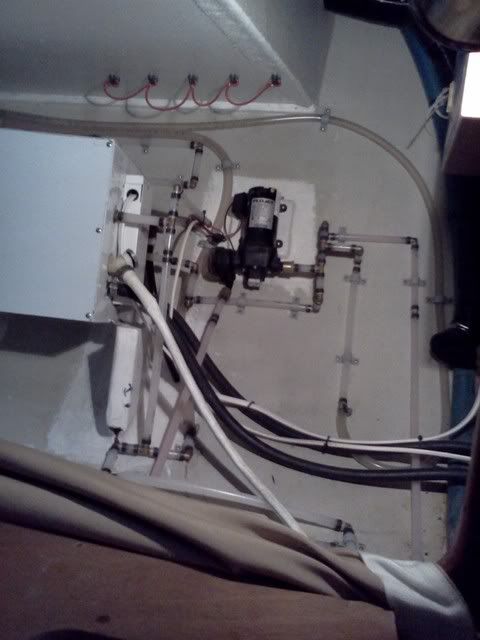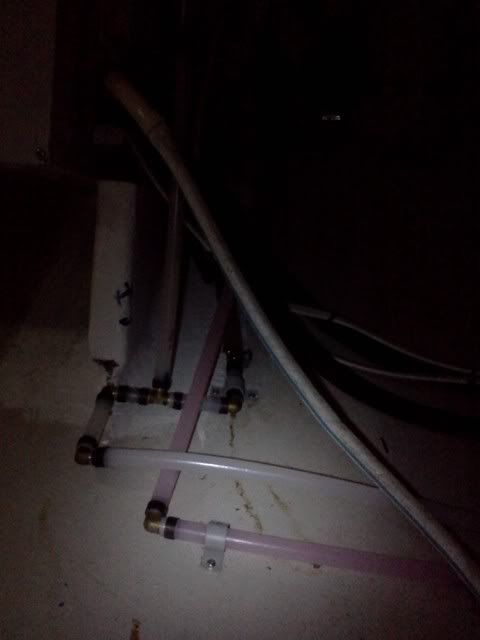One of the aspects of what I used to do in non destructive testing was leak testing, and I was able to exercise that very simple skill on Compass Rose yesterday and today.
The addition of the Bullfinch gas point required an additional tap on the propane line. One of the problems with CR was that the gas line from the tongue was black iron and the lowest point was that pipe under the axle.
I took the opportunity to replace it all with 3/8 copper and that includes 20' of pipe and a boat load of flare fittings, and most of them leaked. How did I know, I used a fairly concentrated solution of Dawn (dish washing soap) and it bubbles with each leak. You do NOT want to use fire to inspect for leaks and you do not particularly want any potential flame or spark source. One alternative would have been to use compressed air and I should have made up an adapter to do that.
The addition of the Bullfinch shower point required cutting the PEX tubing and installing T's and angles (space was too limited and PEX does not bend all that well). Rather than having water fountaining all over the place I used the air compressor adapter used to blow out water for winterizing to pressurize the system and the same testing mixture.
Leak Testing
5 posts
• Page 1 of 1
-

Shadow Catcher - Donating Member
- Posts: 5993
- Images: 234
- Joined: Sat Apr 11, 2009 8:26 pm
- Location: Metamora, OH
Re: Leak Testing
Mild cleaners (like dishsoap) are great for finding leaks, but one caveat is that if there's ammonia in the cleaner, it can harden and crack brass fittings over time. There is also a product you can get (the name escapes me atm) that you paint on the fittings. It goes on purple and, in the presence of LPG, it turns black so you can see if the fitting has been leaking.
A potential problem with compressed air is that you can introduce moisture into the line if you don't have a separator/drier on your compressor.
Just curious, did you use crimp rings on the PEX or O-ring fittings like Neptune or Sharkbite ?
I'm always interested to know how others do things...
A potential problem with compressed air is that you can introduce moisture into the line if you don't have a separator/drier on your compressor.
Just curious, did you use crimp rings on the PEX or O-ring fittings like Neptune or Sharkbite ?
I'm always interested to know how others do things...
-

Wobbly Wheels - Donating Member
- Posts: 1080
- Joined: Tue Mar 15, 2011 9:51 am



